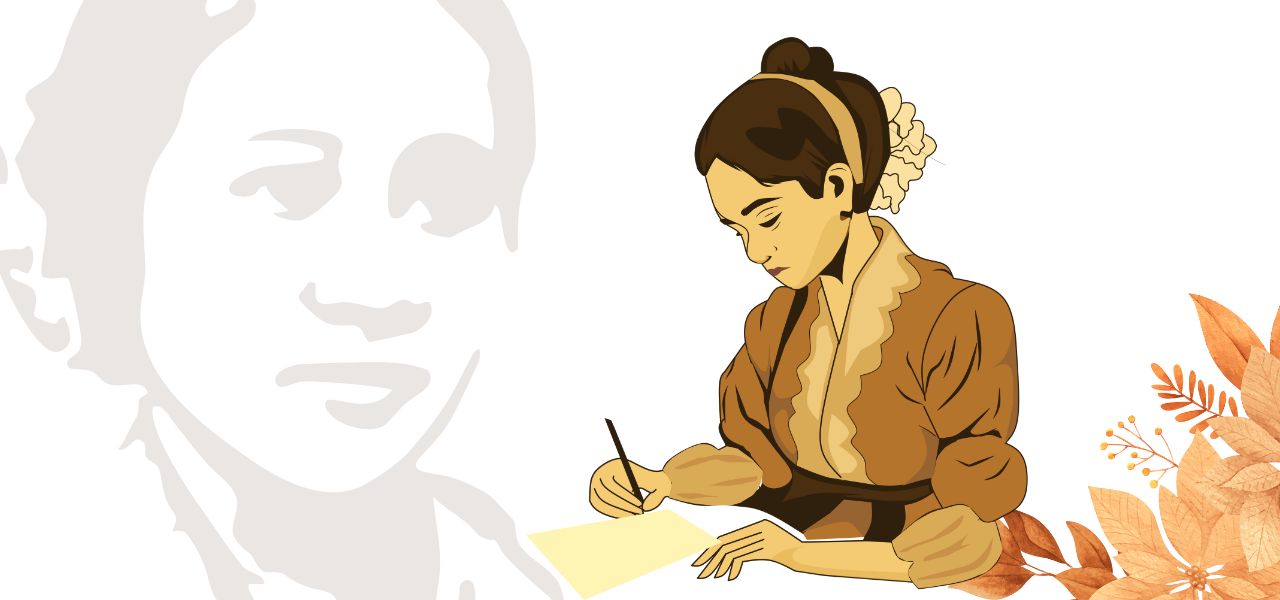By: Dewi Raudlatul Jannah
The momentum of April 21 is celebrated as Kartini Day, taken from the birthdate of Kartini, April 21, 1879, an Indonesian woman whose contribution to thought and movement was valuable in the historical period of the Indonesian women’s movement for liberation.
The patriarchy was surprised by the emergence of a voice of courage from the woman who was born in the land of Jepara. Her thoughts are expressed in all her writings, questioning the culture that the Javanese people believe in but are against in her conscience.
For her, education is not limited to gender, man or woman. Education is about the mind and soul. Pramoedya Ananta Toer stated in his work that Kartini was the first person in Indonesian history to end the era of feudalism, which had become severe.
The Myths of Female Body
A woman’s biological body and society’s construct of it (gender) are two different things. This concept is apparently still often misunderstood by Indonesian people. Gender is interpreted as a biological concept derived from God. Even though gender is something that changes, is dynamic, moves, and is different in each era, this misinterpretation makes women live in fear and full of guilt. Patriarchs created fairy tales and myths to maintain their power.
Madeleine Pelletier is the first woman in the world to hold the title of psychiatric doctor. She received her degree in 1906 and joined the communist party. She then joined the anarchist movement because of her disappointment with Bolshevism. Madeleine condemns every oppressive act. Her radical writings and thoughts opened the way for women’s awareness.
In Mathilde’s 2020 notes, Madeleine ran in the legislative election contest even though she knew it was of course impossible for women to be elected, so on another occasion she threw rocks at the glass.
“Breaking glass with a stone is certainly not an argument, but because men are deaf to women’s interests, just break the glass.”
Ester Lianawati noted in her writing, “Be beautiful and don’t talk too much.” That is a patriarchal order from time to time. As though being a reserved, non-talking woman were a stunning piece of jewelry.
Philosophers, though not all of them, also support and even acknowledge the patriarchal narrative. As conveyed by Sidharta Gautama, said by Confucius, and stated by Jean-Jacques Rousseau, a philosopher of the Enlightenment era, “Even though her face is lovely, a woman is still not considered beautiful if her speech is not sweet. Don’t argue too much, don’t be too critical, and don’t be aggressive.”
Women are made in such a way that they believe that a woman’s only job is to attract.
Beauty myths, virginity myths, and body myths are similar to a vicious circle that traps women in darkness. A woman’s body is an autonomous body; it is not a body meant to be gazed upon or used as a sexual object.
The legendary giraffe women of Loikaw-Birmania are known for having an eight-kilogram spiral and silver necklace around their neck. This custom limits women’s speech and movements in an attempt to make them appear more beautiful.
Women and Change
This article will make readers aware of the inevitability that women are the driving forces behind social change, that they possess bold, clever personalities, and that they possess strategies—qualities that are typically associated with men.
Enheduanna lived in Sumer in the 23rd century BC. A writer and poet, one of her works tells of the violence she experienced.
There is also Syahrazad, who is famous for the fairy tale of 1001 nights and whose skill in telling the story succeeded in delaying King Shahryar’s desire to kill her. Syahrazad is the epitome of courage, intelligence, and freedom.
We need to include Queen Balqis in this article, the Queen of Sheba, with her kindness and wisdom. In another version of the story, King Sulaiman fell in love and proposed to her; Queen Balqis refused because she preferred being queen in her own kingdom rather than being empress and having to share it with 700 wives and 300 concubines.
It was Bertha Pappenheim, an intelligent woman who was diagnosed as hysterical, who conceptualized talk therapy, but history records that it was Sigmund Freud who created this theory. Freud actually took this concept from his patient, Bertha.
Many Indonesian female warrior figures sprang from their concern for the social order and the status of women. Raden Ajeng Kartini was declared one of the national independence heroes. Kartini conveyed the opinions of Bumiputera women via the delegation. She envisions Indonesian women engaging in both public and private spheres of activity.
In the 20th century, the history of the Republic of Indonesia gave rise to a sense of national consciousness, or nationalism. Nationalism was the result of the ethical and political policies of the Dutch colonial government. In ethical politics, efforts to improve education give rise to awareness of national figures.
The Kartini family has deep roots in education. As an intelligent, educated woman, she was able to see that women needed to have equality and freedom.
One of her writings is contained in a letter sent to Miss Zehandelaar on August 23, 1900, as follows:
“This blessing will be even greater if girls are also given the opportunity to learn one of the skills that will enable them to follow their own path in life. Of course, after learning this lesson, she immediately returned to her old world. A girl whose mind has grown and matured is no longer able to live in the world of her ancestors. She was trained to fly and then placed in a cage.”
Kartini and all women fighters in Indonesia have represented the voices of women’s bodies. Voices that had previously been muffled by an oppressive system that upheld repressive authority. Today, let us think about the ideas that previous figures fought for. Happy Kartini Day to all women who struggle!
This article was translated by Napol Riel.
